Jewelry Enameling: The Process
Written by Annabelle
May 3, 2019

Lots of pieces of jewelry have enamel- whether it's kitschy vintage pieces, or standard school rings. But what exactly is enamel, and why does it stick so well to jewelry metals? Read on to learn more about what jewelry enameling is, and how the process works.
What is Enameling?

This interesting vintage owl pin is covered with enamel.
Enameling is the term used to describe a centuries-old technique of fusing a colored compound (traditionally powdered glass) to a surface at very high temperatures, often between 1300 to 1600°F. It's been used by ancient civilizations to create beautiful works of art, including vases, caskets, bowls, and jewelry. In modern times, it still remains very popular in the jewelry industry, as it has a signature, bright glazed look that is considered eye-catching.
The Process Of Enameling
Jewelry enameling is actually divided into several techniques, such as cloisonné, champlevé, and stenciling. These techniques refer to how the enamel is applied to the piece or how the surface metal is treated before enameling. Detailed below is the standard procedure for general modern enameling:
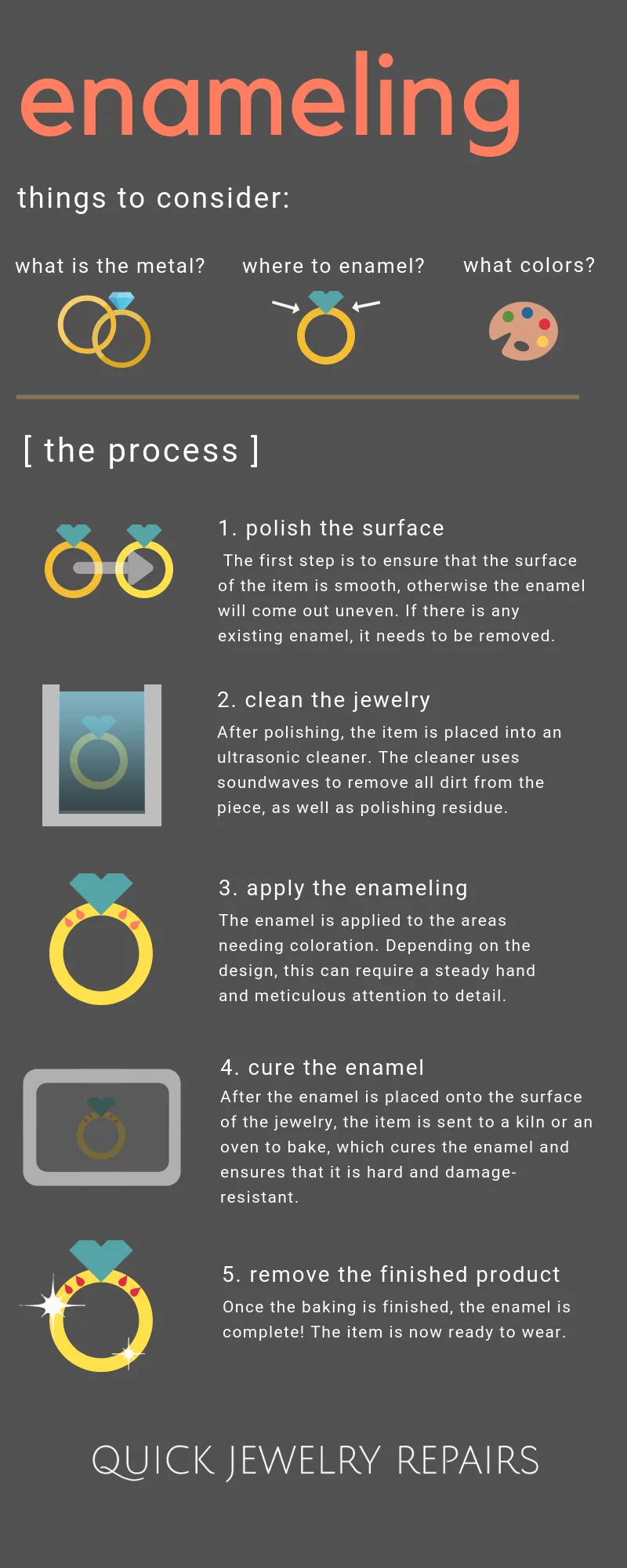
Things to Consider Before Enameling
- What metal is the jewelry made out of? – The base for the enamel can change how it looks and how effective the enameling will be. Gold is a wonderful surface for jewelry enameling- it never tarnishes, making it suitable for transparent enamels. Platinum, contrary to popular opinion, is also suitable for enameling because it actually has a rather low expansion (a term used to describe the lengthening of a metal when subject to high heat.) Silver is well-loved among enamel enthusiasts because of its bright yet non-intrusive color, but caution must be taken when applying transparent enamels because overfiring will cause the enamel to turn yellow. Stainless steel is usually paired with opaque enamels rather than transparent enamels for class ring designs.
Unlike most jewelry work, base metals such as copper, brass, and bronze actually take enamel very well. Copper is a traditional metal used in enameling arts, and it takes very well to a wide variety of transparent and opaque enamels. However, other base metals such as cheap-grade alloys and gold or silver-plated items may not react well to the intensity of the enameling process; as a result, costume jewelry is evaluated on a case-by-case basis to determine if it should be enameled. - What colors and details do you want to enamel? Unlike e-coating or standard gold electroplating, enamel is rarely applied to the entire piece of jewelry. It's normally used for detailing work. On occasion, it can be the focal point of a piece in place of a gemstone, like the renowned Tiffany & Co blue enamel heart bracelet. If you want to enamel a piece of jewelry, consider where you'll want the enamel to go, and what colors you want.

This vintage ring has at least three colors of enamel on the shoulder details.
The Process of Enameling
- Polish the surface: In order to enamel properly, the item must be polished; enameling on a rough surface will show all the scratches and abrasions under the coat of the enamel. The jeweler takes the item to a polishing wheel, which buffs out any flaws with steel wool. Any existing enamel has to be removed- putting enamel over any remains will show and display a blotchy appearance.

A pair of earrings being polished
- Clean the jewelry: After the jewelry is polished, it's moved to an ultrasonic cleaning tank which blasts the item with bubbles in order to remove any dirt or polishing residue. The surface has to be absolutely clean; any contaminants will cause the enamel to crack or become uneven during application.

A ring going through the ultrasonic cleaning process
- Apply the enameling: Once the item is fully prepared, a skilled jeweler applies the enamel to the areas that need color. They may use certain tools to insert the enamel in very tiny areas, such as a special pin-like implement. The jeweler checks to make sure the enamel is even and sends it off to curing.
- Cure the enamel: The jewelry is placed within a special kiln, which heats up to at least 1300 °F. This high heat proceeds to “bake” the enamel, causing it to fuse to the surface and harden into a glossy, durable finish. The process of curing can take some time, to ensure that the enamel properly adheres to the item.
- Remove the finished product: When the curing is finished, the jeweler takes the jewelry out and it's ready to wear! If the enamel has been applied properly, it will last for years without cracking or flaking off.
Why Should I Enamel My Jewelry?
If your jewelry's existing design already contains enamel, you can touch up the original color or change it to a different shade. Enameling is a great way to color your jewelry in specific locations, which is difficult to do with gold plating and e-coating. You can also select from a variety of colors and add more than one color to your jewelry. Because of the curing process, enameling can often be more long-lasting than plating, making it a better investment if you're looking to change the aesthetic of your piece.
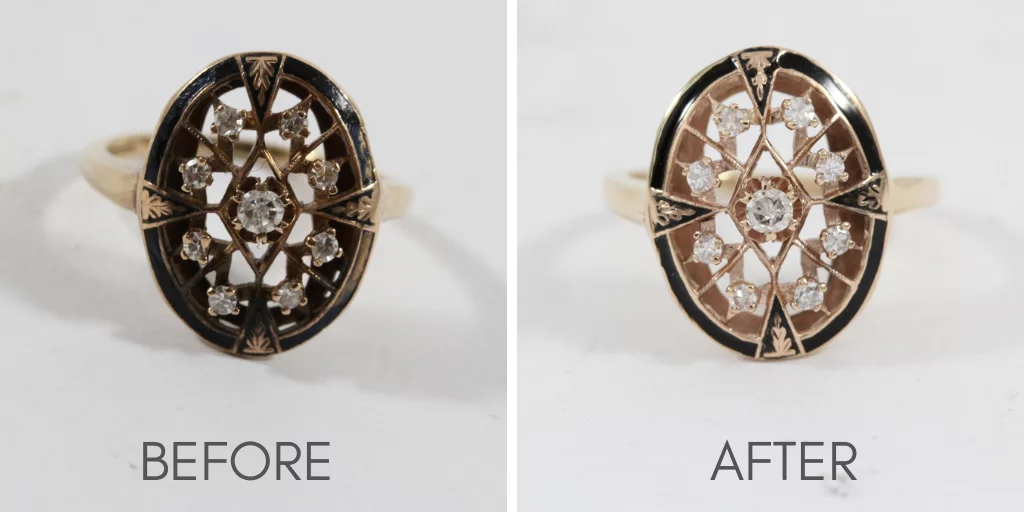
A black antique ring with enamel re-applied to missing areas
The Cost of Enameling
There are several factors that may increase the price of a jewelry enameling job:
- The amount of area(s) that need enameling: The larger the area, or the more details that need enameling, the pricier it gets. This is because the job requires more enamel, and the jeweler will have to properly polish and clean all of the areas.
- The number of colors: One color doesn't take much labor, but intricate enameling jobs involving three or more colors will scale in price accordingly.'
For instance, one area the size of a nickel may be a certain price, whereas a larger area the size of 2 half dollars will be at least $80 more. If there's only one color, the price will depend on the area; but two or more colors will steadily increase the price by a fixed interval.
Now you're ready to get started on enameling your jewelry! Check out our enameling service below.
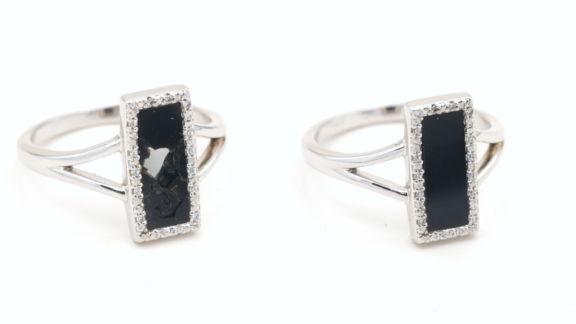

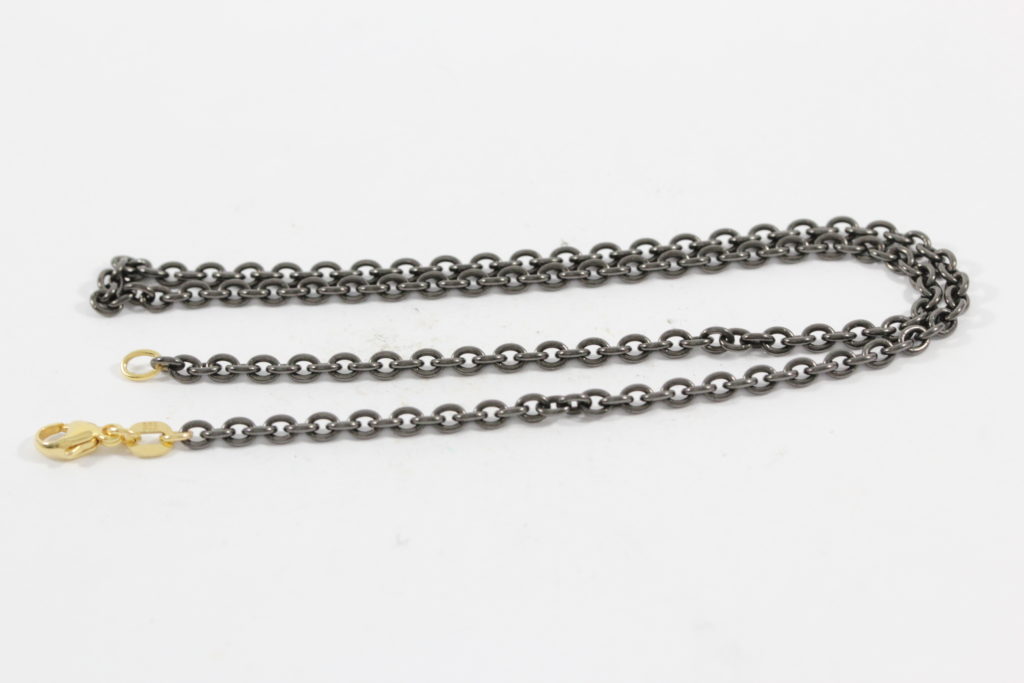
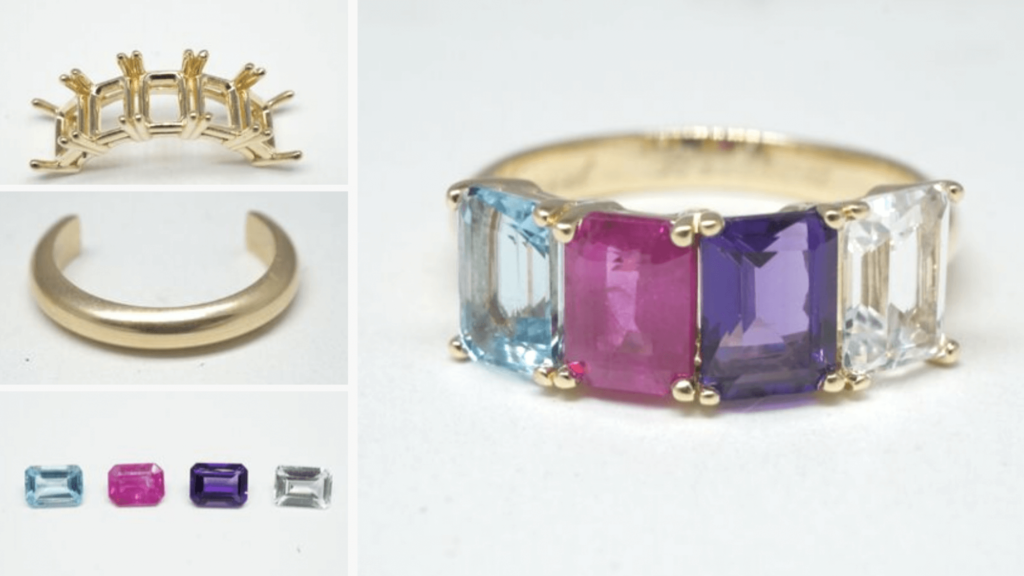
6 Comments on “Jewelry Enameling: The Process”
I have a heart pendant from a necklace, half of the enamel has come off can this be repaired and approx. how much would it cost.
Thank you for reaching out! This is totally up our alley, I’ve followed up directly via email 🙂
I have a ring band that needs enameling. Do you do this?
Hi Lynda, thank you so much for your comment! I reached out via email to help you with your ring enameling needs 🙂